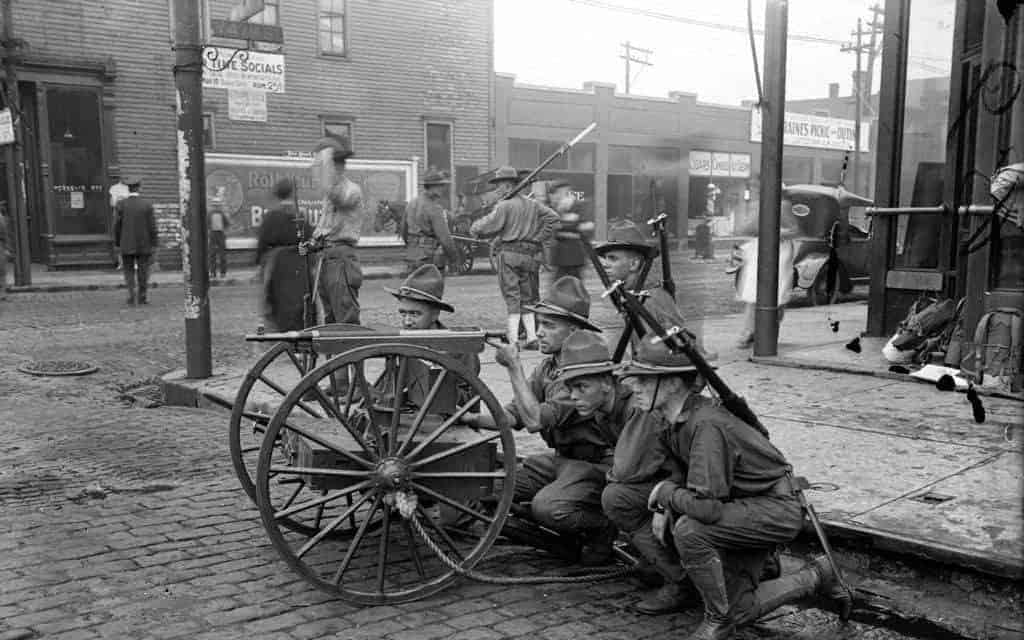Americans riot. During America’s almost 250 year history, mob violence has been used to terrorize populations and to demand political change. Hand-to-hand combat, street fighting, setting buildings on fire, and pulling people from their homes have been modes of violence used in some of America’s most notorious riots.
Rioting in the nineteenth and early-twentieth century was rather commonplace. Yet, while the violence in the riots was the same, they still managed to shock observers. Below are five riots that shook America. Some resulted in no change, others prompted civilian action, and still others exposed a pattern of racial violence that remains virtually unchanged today.

Bread Riots, Richmond, Virginia – 1863
Most of the battles of the American Civil War occurred in southern states. As the two warring armies entered the countryside and faced each other in battle, maintaining a farm was nearly impossible. Even for those that were able to farm a few acres, when the armies were nearby, they often took the crops, livestock, and foodstuff for their own consumption. This left those in the countryside on farms and small towns without food. Women and their families left the countryside for the city in hopes of finding war-related work and food.
As the war dragged on, those on the home front dealt with soaring inflation and high food prices. For long-time residents of the cities, they had to deal with the massive onslaught of the migrating refugees who had the clothes on their backs, a family bible, and little else. The little food available for poor city-dwellers suddenly had to be shared with poor refugees. There simply was not enough to go around; even being wealthy did not exclude a person from hunger.
Women protested in front of the Confederate Capitol in Richmond. They demanded that President Jefferson Davis supply them with the bread they so badly needed. Unwilling or unable to alleviate the food shortages, Davis provided no assistance. On April 2, 1863, roughly 5,000 women and their family members stormed into shops and warehouses, smashing windows and setting small fires, taking whatever they could. They took jewelry, clothes, food, and other items. The smash and grab of the Civil War left shops destroyed and businesses ruined. The Mayor of Richmond proclaimed martial law with the state’s militia sent to squash the violence.
Women took an active and violent role in demanding bread. While no one was killed during the protesting, the act of women rioting was a stark contrast to the ideals of nineteenth-century womanhood. The Richmond Bread Riots of 1863 illustrated that women were willing and able to demand that the government fulfill their responsibilities to their citizenry and ultimately changed the way that women participated in the Republic.

